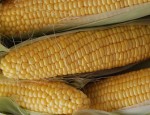 Heirloom vegetables have become increasingly popular lately and more and more people are interested in growing them. Unfortunately, there is disagreement about what it takes to be a true heirloom variety. Still worse, there seems to be some unfortunate misconceptions about heirlooms so expectations may not be in line with reality.
Heirloom vegetables have become increasingly popular lately and more and more people are interested in growing them. Unfortunately, there is disagreement about what it takes to be a true heirloom variety. Still worse, there seems to be some unfortunate misconceptions about heirlooms so expectations may not be in line with reality.
What does it take to be an heirloom?
 Age
Age
Everyone seems to agree that age is one factor but the number of years involved ranges from 100 down to 50. The date 1951 seems to be a popular and logical one to use as a cut off point for heirlooms because that was the year that the first hybrids were introduced. This was the result of the beginning of large scale industrial agriculture. Hybrids were developed to facilitate many aspects of producing and moving large quantities of vegetables from farms to market and taste and texture have suffered.
 Open pollination
Open pollination
In simple terms this means that the plants were grown from seeds resulting from random pollination in the field. The plants that grow from these seeds are similar to their parents but not as consistent as the off spring from the hybrid seed you buy (F-1 hybrids).
Most people who grow heirloom vegetables do so because they think that the vegetables taste better than the hybrid vegetables. Sometimes they are correct. As mass production and sale of vegetables has increased plant breeders have concentrated on producing plants that can be grown, harvested, and taken to market more easily and cheaply. Sometimes flavor and texture have suffered. On the other hand, tolerance to pests and diseases as well as drought resistance have also introduced into hybrids and is often lacking in heirloom varieties. It’s a trade off and some heirlooms are better than others.
Of course there are other reasons than taste and texture for growing heirloom varieties. Some people have an historical interest in what people ate in the past, while others want to increase the availability of heirloom genes in the gene pool. Then, too, it’s a back to nature sort of thing, just like organic gardening. Are you thinking about giving one a try? ‘Brandywine’ tomato and ‘Golden Bantam’ corn are two good ones.
